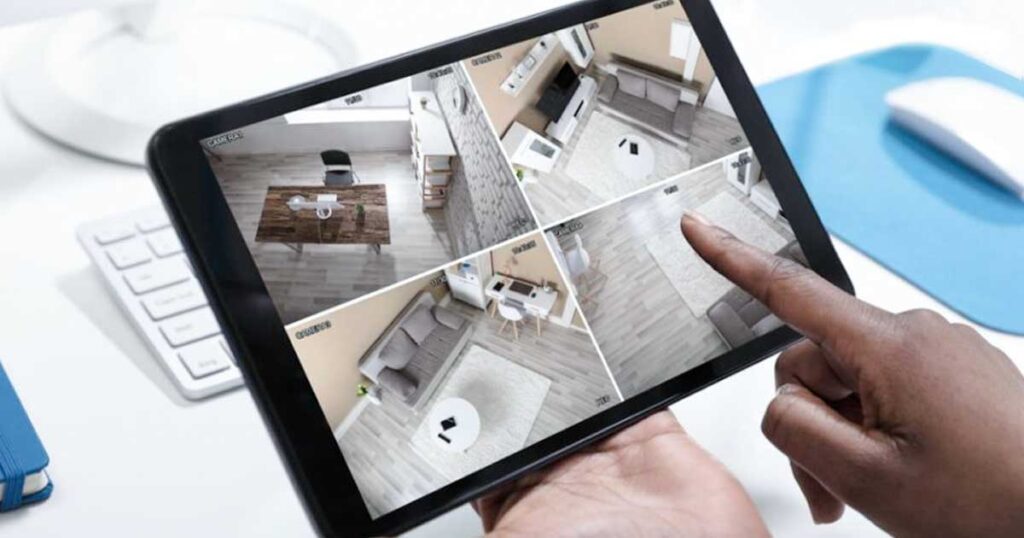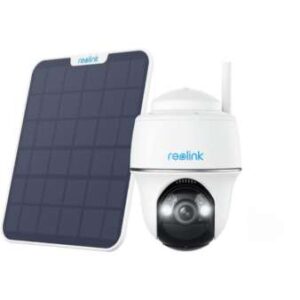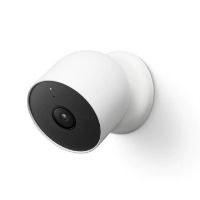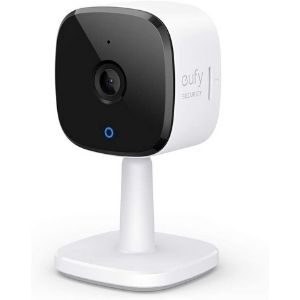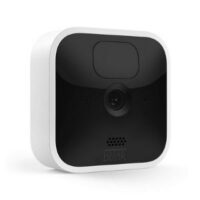Security camera terminology can get confusing with acronyms like PTZ and IP and FHD. Our glossary will clarify common features and help you choose a security camera.
What Types of Security Cameras Are Available and What Are the Differences Between Them?
For over 11 years, SafeWise experts have conducted independent research and testing to write unbiased, human reviews (not robots). Learn more.
By signing up, you agree to our Terms and Conditions and Privacy Policy.
Indoor vs. outdoor cameras
The simplest way to categorize types of cameras is whether they're meant for indoor or outdoor use.
Outdoor security cameras include video doorbells, floodlight cameras, solar-powered cameras, weatherproof home security cameras.
Indoor cameras include nanny cameras, pet cameras, and general home security cameras that don't have weatherproof features.
Learn more about the differences between indoor and outdoor cameras, 10 clever ways to use an indoor camera, and where to place security cameras.
Wired vs. wireless cameras
There are several ways to interpret wired vs. wireless cameras. We'll be brief here since we have a separate article dedicated to the differences between wired and wireless cameras.
In short, wireless cameras always connect to Wi-Fi. The wire that's "lost" here is an Ethernet cable, so the opposite of a wireless camera is a PoE (power over Ethernet) camera.
A camera that connects to Wi-Fi can also be hardwired into your home's electrical circuit for constant power, hence the confusion. That leads us to more vocabulary: professional vs. DIY. If a camera is said to be DIY, it means you can install it yourself—no need for an electrician or professional security installer to patch it into your home's electrical panel.
IP vs. analog or closed-circuit cameras
IP (internet protocol) cameras connect to the internet and can be wireless or wired. You use a website or smartphone app to view the camera's live feed. Some IP cameras also integrate with smart home hubs like Amazon Alexa or Google Assistant so that you can control them with voice commands or include them in home automation routines.
Analog or closed-circuit television (CCTV) cameras don't connect to the internet. Their footage never goes online—it's viewed on-site. As such, they're always wired cameras, and you can't control them through an app or website.
CCTV cameras never store footage on the cloud. Instead, they use digital video recorders (DVRs) to store footage locally on an SD card, flash drive, or even a CD. You can then transfer those files to a computer and upload them to the internet manually.
Some IP cameras can also store footage locally through a network video recorder (NVR). Others only allow footage to be stored on the cloud—and usually for a monthly fee.
Learn more about local vs. cloud storage and DVRs vs. NVRs.
PTZ vs. fixed cameras
PTZ stands for pan, tilt, and zoom. These cameras can pan left or right, tilt up and down, and zoom in and out for a wider viewing angle. Some cameras perform only one or two of those functions—the acronym is adjusted accordingly.
A PTZ camera's movements are remote-controlled. If the PTZ camera is also a smart camera, you control its movement through an app. If it's an analog PTZ camera, you use a special keyboard/joystick to move it around.
But some PTZ cameras don't need human intervention—these special cameras have motion sensors and automatically track movement to keep it in view for as long as possible. Others can be programmed to move around on a timer or schedule.
In contrast, a fixed camera doesn't move unless you physically adjust the camera's mounting bracket.
A camera with optical zoom physically moves its lens to focus on a far-away area. A camera with digital zoom magnifies the image you see on the screen, which can sometimes cause it to look grainy or out of focus if the image resolution wasn't great to begin with.
Motion detector cameras
Motion detector cameras wait for activity before they begin transmitting or recording. This not only saves on video storage but also makes it possible to self-monitor an IP security camera or video doorbell since you'll get a push notification when the camera senses motion.
Floodlight and spotlight cameras also use motion detection to trigger their lights, and many security cameras are starting to distinguish between people, pets, and cars to cut down on false alarms.
Learn more about the types of motion-sensing technology.
Dome vs. bullet cameras
Dome cameras mount on a ceiling, overhang, or wall and get their name from the circular covering that protects the camera lens. This covering is often tinted to hide the angle of the camera. The idea is that intruders won't know where the camera's pointed and won't be able to skirt around its field of view.
You're more likely to see dome cameras in commercial vs. residential settings, but some brands like Amcrest do sell them for home security.
A bullet camera is just a camera with a specific shape: long and relatively thin. You can see a good example of a bullet camera in our Zmodo review.
SD, HD, FHD, QHD, and UHD
This alphabet soup helps you understand the camera's image clarity. We've listed them here in order of lowest to highest quality with the pixel size in parentheses:
- Standard Definition (480p)
- High Definition (720p)
- Full HD (1080p)
- Quad HD or 2K (1440p)
- Ultra HD or 4K (2160p)
Some Ultra HD cameras are actually quite affordable. Check out our round-up of the best HD home security cameras to compare prices and specs.
The list of camera resolutions continues with Cinema 4K, 5K, and 8K, but you won't find home security cameras with those specs.
Standalone cameras vs. security system cameras
Some security cameras can only be bought and used as part of a home security system. But most security cameras on the market are standalone devices that don't rely on a security system subscription.
Every once in a while, a security company offers up its cameras as standalone devices. For example, you can buy the Vivint Doorbell Camera Pro without getting a full-blown Vivint system.
Consider these pros and cons before getting a camera that's tied to a security system:
- Most security system cameras aren't professionally monitored. Only ADT and SimpliSafe offer video alarm verification—but only in their most expensive plans.
- Some security system cameras aren't any fancier than their standalone counterparts. Vivint's innovative cameras are the exception, and Frontpoint's cameras are gaining ground too.
- Using a security system camera makes it possible to create home automation routines, such as turning the camera off when the system is in "Home" mode. Standalone cameras may not integrate with the security system unless they're compatible with Abode or IFTTT.
- Security system cameras use the same app that controls all of your other security devices, which offers some convenience.
Compare the best home security cameras
Amazon.com price as of post date. Offers and availability may vary by location and are subject to change Read full disclaimer.
Info current as of post date. Offers and availability may vary by location and are subject to change.
Recent Articles

